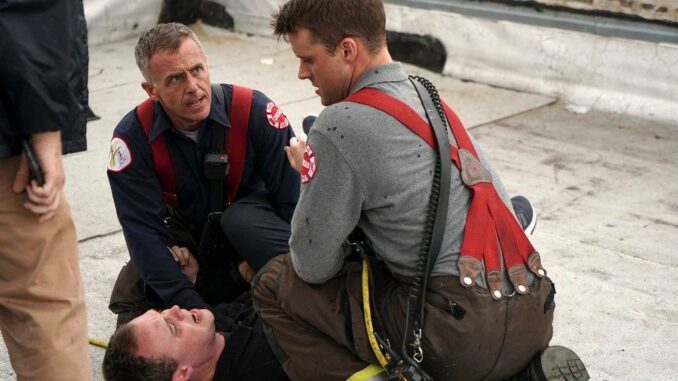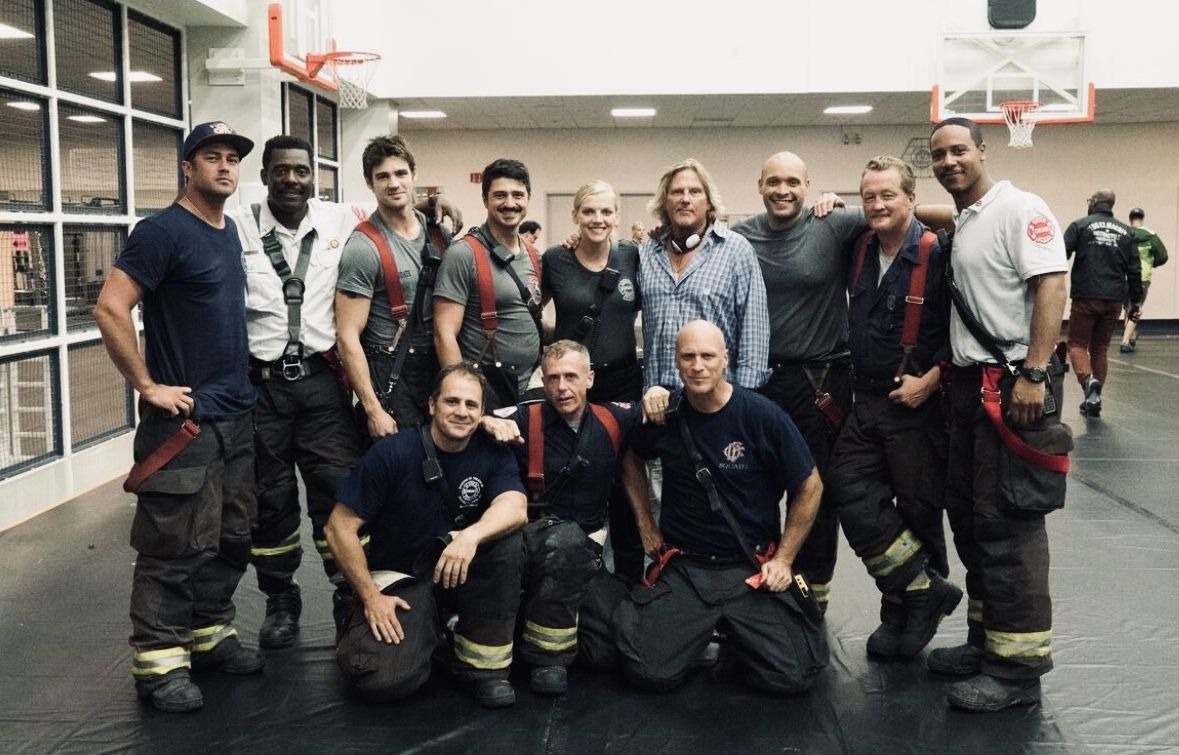
Chicago Fire is not an ordinary action series. Since its first broadcast in 2012, this series has always made a strong impression with breathtaking explosions, dramatic rescues, and especially the “real” feeling that makes every moment creepy. Behind those moments, there is an elaborate, meticulous and dangerous production process that the audience rarely witnesses.
Close cooperation with the Chicago Fire Department
One of the factors that makes Chicago Fire so realistic is the direct cooperation with the Chicago Fire Department (CFD). Many real firefighters have participated as technical advisors or supporting actors in the scenes. They ensure that: Firefighting and rescue procedures are accurately reproduced. Actors use equipment properly. Movements, postures, and behaviors during the fire are all true to reality.
Steve Chikerotis, former CFD commander, served as a key advisor for many seasons, ensuring that the scenes were not only convincing but also respectful of the firefighting profession.
Actors must undergo training like real firefighters
Before entering dangerous scenes, the main actors such as Jesse Spencer (Casey), Taylor Kinney (Severide), Kara Killmer (Sylvie), Miranda Rae Mayo (Kidd)… all had to undergo basic firefighting training: How to wear SCBA breathing equipment, oxygen tanks. Techniques for using water hoses, axes to break doors. Maneuvers when climbing stairs, breaking into burning buildings. Moving in dark, smoky, high temperature environments.
Training not only helps filming smoothly, but also helps actors act realistically – breathing realistically, getting tired realistically, sweating realistically – creating a vivid cinematic experience for the audience.
No CGI for Fire – Real Fire
What makes Chicago Fire stand out from other TV shows is that most of the fire scenes are real. They actually burn down houses, warehouses, cars, and sometimes even separate buildings in the studio.
The fire is tightly controlled by fire engineering experts. Sprinklers and backup fire suppression systems are always ready. Medical teams and real firefighters are always on duty outside the studio.
Filming real fire makes the lighting, shadows, and burning effects on the actors’ faces much more “real” than CGI – something the audience can clearly feel in each episode.
Stunts – less than you think

Although action movies often use a lot of stuntmen, Chicago Fire is famous because the main actor does most of his own dangerous scenes.
Taylor Kinney once actually went into a burning house to film a scene where he rescued a child. Jesse Spencer shared that he once breathed on a real oxygen tank for 10 minutes while filming the “trapped in smoke” scene.
Miranda Rae Mayo once performed a scene climbing a 4-story ladder – without any CGI support. This is why the actors’ expressions in the film are always extremely realistic – because they are actually experiencing fear, heat and pressure.
Building a fire set: A miniature world on the set
Not all fire scenes are filmed on real sets. Chicago Fire has its own studio at Cinespace Chicago Film Studios, where they built fake fire rooms that can: Adjust the level of smoke. Increase or decrease the heat/cold. Change the slope of the floor, the collapsed ceiling, etc. Control the flow of air and light to suit the script.
This helps the crew stage dangerous situations while still ensuring maximum safety, especially in scenes that require multiple retakes from multiple camera angles.
Safety Lessons and In-Depth Techniques
The Chicago Fire crew is known for being one of the most safety-conscious television crews. They regularly: Live rescue drills before every major shoot. Escape drills for cast and camera. Checking air quality and temperature in the studio. Working with medical professionals in case of smoke inhalation. Even behind-the-scenes crews like cameramen, lighting, and sound wear protective gear during major fire scenes.
The Bottom Line: Real Fire, Real Sweat – and Real Effort
Chicago Fire isn’t just a show about firefighters – it’s one of the most realistic action-packed television productions ever made. The breathtaking action and explosion scenes that audiences see every week are not due to special effects, but are the result of: Hundreds of hours of training, Coordination with the fire department, The courage of the actors themselves, And a burning passion for the profession. That is what gives life to Firehouse 51 – a place that is not just a movie set, but a living, authentic, and inspiring world.
